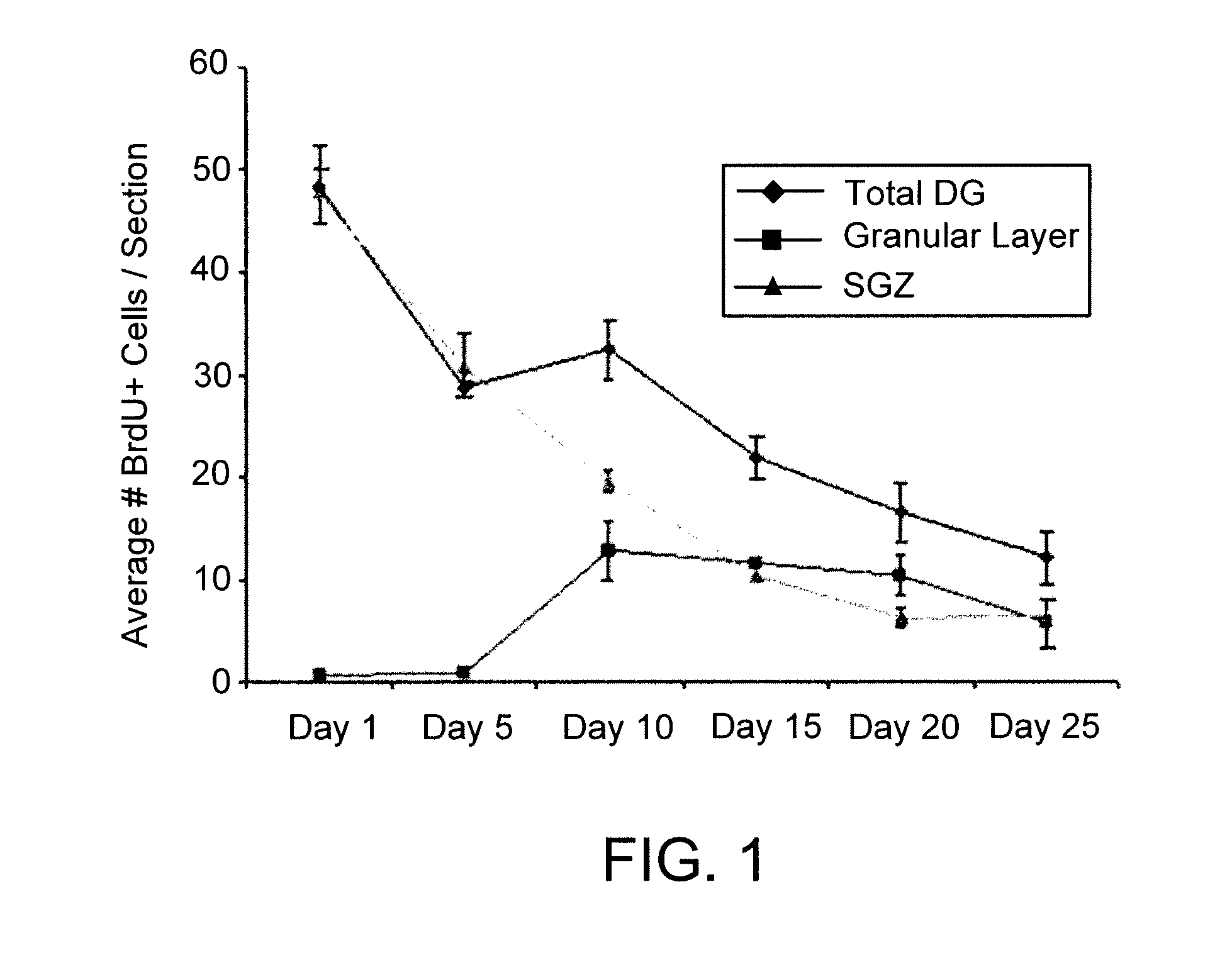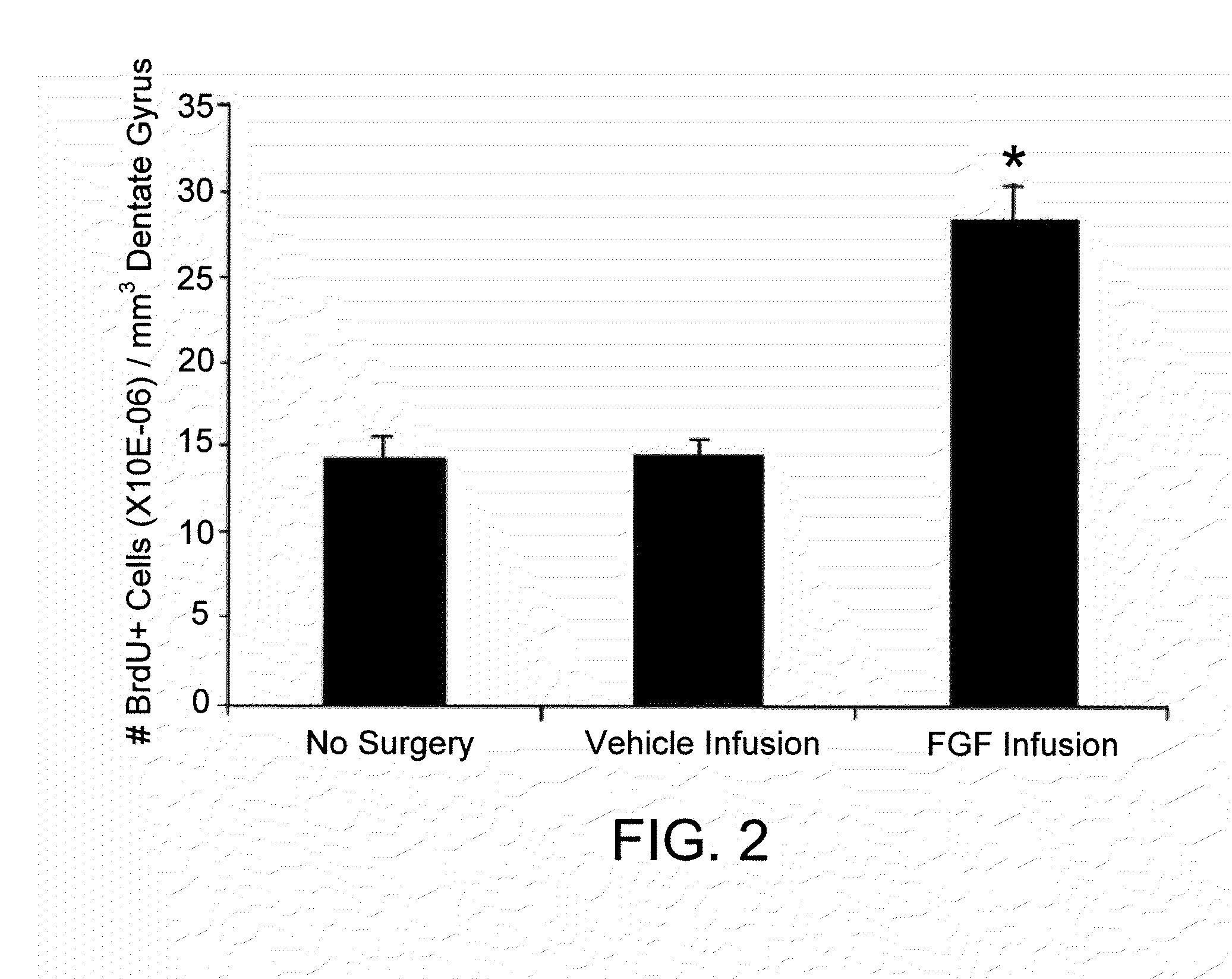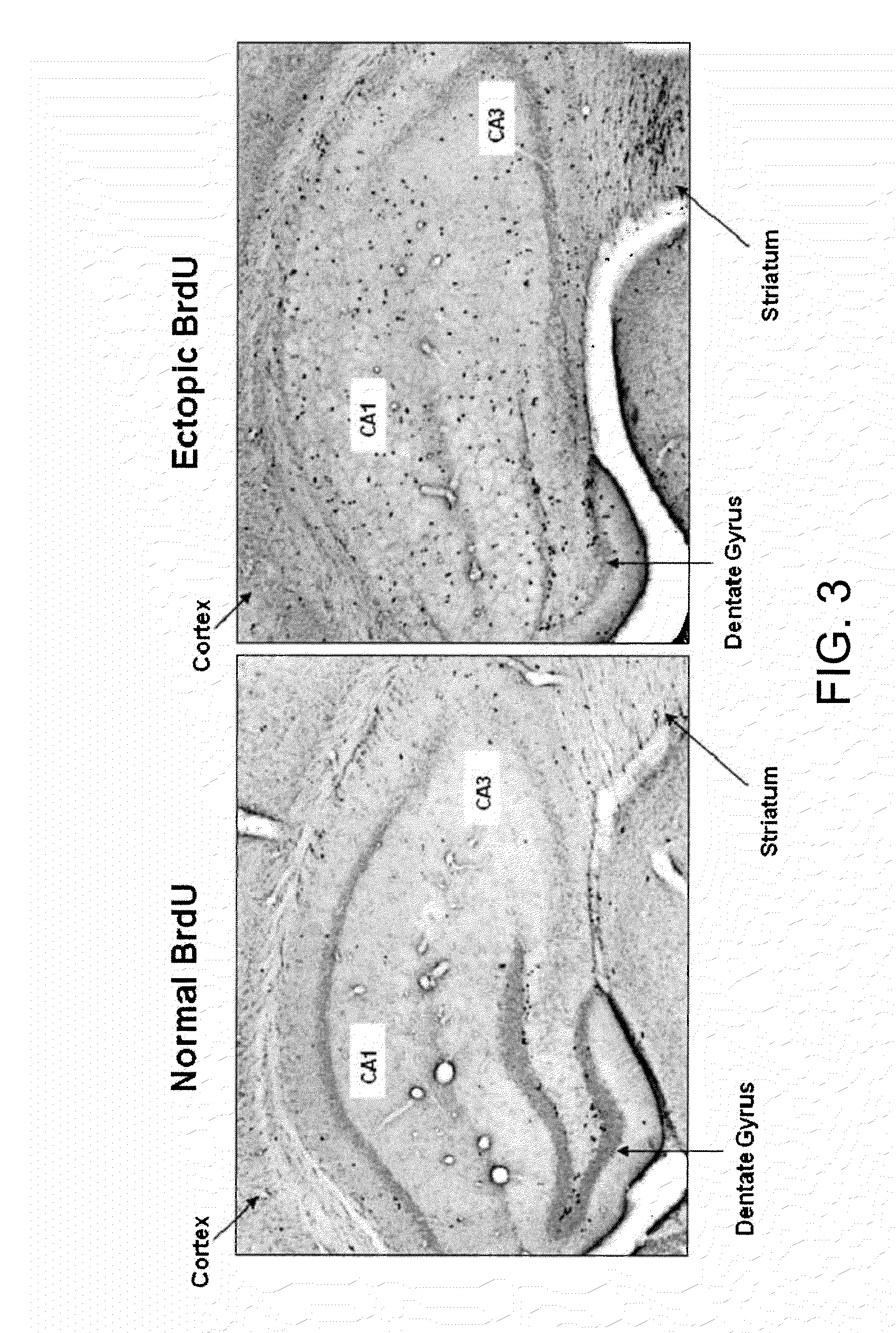Pro-Neurogenic Compounds
a technology of pro-neurogenic compounds and compounds, applied in the field of proneurogenic compounds, can solve the problems that no new neurons could be added to the adult mammalian brain, and achieve the effect of slowing down the progression, reducing the risk of developing, and delaying the onset of the onset of the onset of the onset of the onset of the onset of the onset of the onset of the onset of the onset of the onset of the onset of th
- Summary
- Abstract
- Description
- Claims
- Application Information
AI Technical Summary
Benefits of technology
Problems solved by technology
Method used
Image
Examples
example 1a and 1b
S- and R-1-(3,6-Dibromo-9H-carbazol-9-yl)-3-(3-methoxyphenylamino)-propan-2-ol
[0728]
Representative Procedure 1.
Step 1. Synthesis of 3,6-Dibromo-9-(oxiran-2-ylmethyl)-9H-carbazole
[0729]
[0730]Following a literature procedure (Asso, V.; Ghilardi, E.; Bertini, S.; Digiacomo, M.; Granchi, C.; Minutolo, F.; Rapposelli, S.; Bortolato, A.; Moro, S. Macchia, M. ChemMedChem, 2008, 3, 1530-1534) powdered KOH (0.103 g, 1.85 mmol) was added to a solution of 3,6-dibromocarbazole (0.500 g, 1.54 mmol) in DMF (1.5 mL) at ambient temperature and stirred for 30 min until dissolved. Epibromohydrin (0.32 mL, 3.8 mmol) was added via syringe and the reaction was stirred at room temperature overnight. Upon completion, the solution was partitioned between EtOAc and H2O. The aqueous layer was washed 3× with EtOAc, and the combined organics were washed with saturated aqueous NaCl, dried over Na2SO4, filtered, and concentrated in vacuo. The crude residue was recrystallized from EtOAc / Hexane to afford the desir...
example 2
1-(3,6-dibromo-9H-carbazol-9-yl)-3-(2-iminopyridin-1(2H)-yl)propan-2-ol
[0744]
[0745]Example 2 was prepared following Representative Procedure 2, except with a reaction time of 2 days at 80° C. The crude product was used without further purification.
[0746]1H NMR (CDCl3, 400 MHz) δ=8.14 (2H, J=1.9 Hz), 7.55 (dd, 2H, J=1.9, 8.8 Hz), 7.35 (d, 2H, J=8.7 Hz), 6.83 (t, 1H, J=7.6 Hz), 6.37 (d, 1H, J=6.8), 6.32 (d, 1H, J=9.1 Hz), 5.65 (t, 1H, J=6.7 Hz), 4.39 (dm, 5H), 3.54 (d, 1H, J=13.9 Hz)
[0747]MS (ESI), m / z: found 473.9 (M+1)+ ([M+1]+ for C20H18Br2N3O requires 474.0)
example 3a
1-(3,6-dibromo-9H-carbazol-9-yl)-3-(phenylthio)propan-2-ol
[0748]
[0749]Benzenethiol (30 μl, 0.29 mmol) was added to a solution of 3,6-dibromo-9-(oxiran-2-ylmethyl)-9H-carbazole (101.6 mg, 0.27 mmol) in 5.0 ml MeOH at r.t. The reaction mixture was heated to 80° C. and stirred overnight at the same temperature. The reaction was monitored by 1 c / ms for the consumption of SM. The reaction was cooled, diluted with ethyl acetate and washed with water and brine. The organic layer was dried over Na2SO4, filtered and condensed.
[0750]1H NMR (CDCl3, 400 MHz) δ 8.03 (d, 2H, J=2.1 Hz), 7.48 (dd, 2H, J=2.0, 8.7 Hz), 7.33-7.20 (m, 7H), 4.33 (dd, 1H, J=4.3, 14.9 Hz), 4.20 (dd, 1H, J=6.9, 14.9 Hz), 4.00-4.12 (m, 1H), 3.05 (dd, 1H, J=5.3, 13.9 Hz), 2.93 (dd, 1H, J=7.2, 13.9 Hz), 2.51 (bs, 1H)
[0751]MS (ESI), m / z: found: 505.9 [M+O-1]− ([M+O-1]- for C21H17Br2NOS requires 504.9; (oxidation occurred under MS conditions; NMR not consistent with sulfoxide)
PUM
| Property | Measurement | Unit |
|---|---|---|
| time | aaaaa | aaaaa |
| time | aaaaa | aaaaa |
| time | aaaaa | aaaaa |
Abstract
Description
Claims
Application Information
 Login to View More
Login to View More - R&D
- Intellectual Property
- Life Sciences
- Materials
- Tech Scout
- Unparalleled Data Quality
- Higher Quality Content
- 60% Fewer Hallucinations
Browse by: Latest US Patents, China's latest patents, Technical Efficacy Thesaurus, Application Domain, Technology Topic, Popular Technical Reports.
© 2025 PatSnap. All rights reserved.Legal|Privacy policy|Modern Slavery Act Transparency Statement|Sitemap|About US| Contact US: help@patsnap.com



